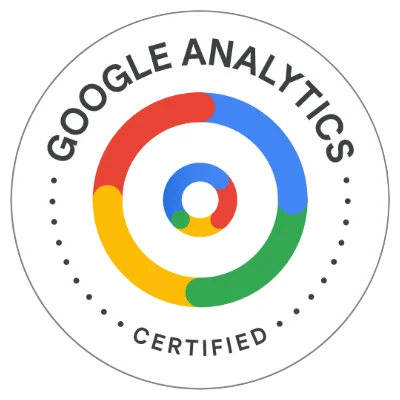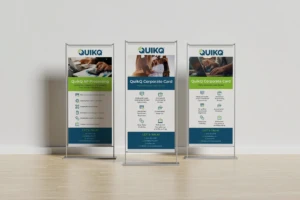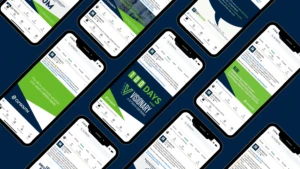Let me throw out a crazy thought that’s meant to change the way you think about social ad targeting: $500 spent in a hyper-relevant Substack newsletter could get you better ROI than $5,000 thrown at broad social targeting. Let me explain.
We’re witnessing something I haven’t seen since the mid-2000s blogging gold rush. Remember when everyone you knew, and their mothers, and their doctors, had a popular blog with decent followings and some level of monetization happening? Well, creators are now flocking to Substack, Kit and beehiiv like there’s no tomorrow.
And the numbers are encouraging—Substack alone has over 5 million paid subscribers across its platform, with top creators pulling in six and seven figures annually.
To me, this movement is also reminiscent of the podcast boom. Just five years ago, clients would wrinkle their noses when I suggested podcast advertising. “Too nerdy,” they’d say. “Too niche.” Fast forward to today, and podcast advertising is expected to eclipse $2.6 billion in 2026. Smart marketers who jumped in early? They rode that wave all the way to the bank.
We’re at that exact same inflection point with newsletters, except most brands are still sleeping on this opportunity. Here’s why it could be time to wake up and smell the newsletter:
The Social Cost Squeeze (And Why It’s Still Worth It)
Don’t get me wrong, I’m not here to trash social advertising. Our clients at Brand825 are still seeing solid returns from LinkedIn, Instagram and TikTok campaigns. But let’s be honest about what’s happening out there.
The cost per mille (CPM, which is cost per thousand impressions) across multiple networks keeps climbing. Snapchat’s CPM rates climbed 47% from 2021-24, and TikTok had the fastest-growing advertising rate in 2023, when CPM climbed 19%. Meanwhile, many brands are struggling to connect with their audiences through organic social alone, as organic posts now reach less than 5% of followers on many platforms.
And let’s be honest: Algorithm fatigue is real. Your audience is getting hit with hundreds of ads daily, scrolling past your carefully crafted creative in a matter of milliseconds. It’s like trying to have a meaningful conversation at a Metallica concert.
Look, social isn’t broken, but it is getting more expensive and competitive. Which is exactly why diversifying your reach is never a bad t
Why Newsletter Inbox Attention Hits Different
Think about how you consume newsletters versus social media. When someone opens Morning Brew or receives their favorite industry newsletter (Stacked Marketer, in my case), they’re in a completely different headspace. They’ve actively subscribed. They want to be there. They’re actually reading and not doomscrolling.
This isn’t accidental attention. It’s intentional engagement.
Here’s why newsletter advertising complements your social strategy so perfectly:
- Attention Quality: Newsletter readers aren’t mindlessly scrolling. They’re actively consuming content, which means your message gets real consideration instead of a split-second glance.
- Message Length: Try explaining a complex B2B solution in a small, hyper-targeted social ad. Newsletters give you room to actually tell a story.
- Attribution Clarity: Social attribution doesn’t give you a whole lot of meaningful, ironclad data. Newsletter clicks, on the other hand? They’re direct, measurable and honest about their source.
- Audience Intent: Newsletter readers didn’t accidentally stumble across your ad, they’re subscribers who’ve demonstrated interest in your category.
Early adopters get the best rates, the most attention and the strongest relationships with creators. Newsletter advertising is giving us that same rare window of opportunity, but it won’t stay open
Four Steps to Test without Torching Budget
Want to test the newsletter waters? Here’s how to do it without burning budget or making avoidable mistakes.
Step 1: Map Your Newsletter Landscape
Start by identifying newsletters your target audience actually reads. Ask your current customers what they subscribe to… you’ll be surprised how often the same publications come up. Use tools like Substack’s discovery feature or browse Kit’s showcase to find relevant publications.
Step 2: Vet Like a Pro
Before you make that first payment, ask these crucial questions:
- What’s their actual open rate? (As of 2025, the average email open rate across industries is 42.35%. However, I’d aim a bit higher than that for newsletter open rates.)
- Can they share demographic breakdowns?
- How often do they send promotional content?
- What’s their subscriber growth trend over the past six months?
Step 3: Craft Your Outreach
Newsletter creators are entrepreneurs, not traditional media gatekeepers, and your approach should reflect that. Mention what you like about the newsletter and how you think a partnership could benefit both parties. Keep it personal, specific and collaborative.
Step 4: Start Small, Scale Smart
Begin with a $500 to $1,000 and test across two to three newsletters. Track everything, including clicks, conversions and customer lifetime value. Give it at least two months to gather meaningful data before making big decisions.
The Ground Floor Opportunity
Look, I’ve been doing this for over three decades. I’ve watched countless marketing channels evolve from “experimental” to “essential.” Email marketing, content marketing, social advertising, influencer partnerships, etc., all followed the same pattern.
The brands that move now, while newsletter creators are still figuring out their pricing and publishers are hungry for quality partners, will have a massive advantage over those who wait for case studies and best practices to emerge.
Your competitors are already testing this, whether you realize it or not. The question isn’t whether newsletter advertising will become mainstream. It’s whether you’ll be ahead of the curve or playing catch-up.
So, what’s stopping you from testing your first newsletter placement this month?
Got questions about implementing newsletter advertising in your marketing mix? I’d love to hear about your specific challenges. Drop me a line and let’s figure this out together.
Kedran Brush, Brand825’s Co-Founder and CEO, has more than 28 years of marketing leadership experience at the SVP and CMO levels, including revenue growth, customer satisfaction, brand awareness, etc. When she’s not helping brands be their best, Kedran can be found relaxing on the lake, at Tennessee Titans games and trying to stop her dog from chasing the elusive neighborhood squirrel.











